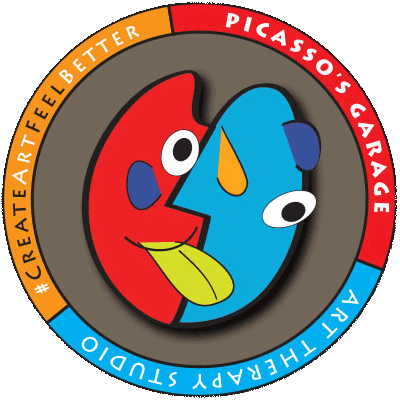The use of comics in psychotherapy is not new. Dr. Lauretta Bender, head psychiatrist, Bellevue Hospital (NY), along with colleague Dr. Reginald Lourie studied the effects of comics on children in the 1940's. In her work with children, Bender noticed that “the spontaneous art work of children in many instances concerns itself with the various heroes and what they have done in their more recent episodes”. The clinicians realized that they could capitalize on kids' familiarity with comic book characters when developing interventions and published their article “The Effect of Comic Books on the Ideology of Children” in 1941. In this paper Bender and Lourie presented several case studies. The authors cited the successful use of comics and superheroes with their patients, making observations such as: “By ide(Bender & Lourie, 1941, p.ntifying herself with the heroine who is always rescued from perilous situations, she temporarily achieved an escape from her own difficulties” (Bender & Lourie, 1941, p. 542).
Superheroes take on many forms and provide inclusive, diverse role models with the capability of adapting to societal needs over time. According to Rubin (2007) superhero fantasy play or used as metaphor creates healing experiences so that “children and adults can work on and resolve past crises (regressive), express current issues and struggles and experiences catharsis around them, or relate desires for the way they would like things to work out for them (progressive)” (p. 16). During the Golden Age of Comics, in the 1940s, heroes were more like gods than mortals. The devastation of World War II created the need for heroes capable of unbelievable feats that could save the world (Rubin, 2007). The Silver Age of Comics followed during the 1950s and 1960s, when superheroes became more human with apparent flaws. During the 1970's, the Bronze Age of Comics, the trend of normalizing superheroes continued as authors realized their readers wanted their heroes to be more attainable (Rubin, 2007). This type of flawed hero is still in favour today, with examples such as Batman, Ironman, Captain America, Jessica Jones and the Incredible Hulk. According to Rubin (2007) the resulting more relatable hero and storylines, which mixed the fantastic with everyday life, provide an excellent therapeutic tool. Rubin, a psychotherapist and researcher interested in the intersection of psychology and popular culture made the following observation:
Of the various theories, tools, and techniques available to the therapist, one of the most powerful resources for self- understanding, growth, and healing may well be fantasy. It is the metaphoric place where problems of the past and present meet the possibilities of the future, in conflicts both minor and epic. It is the place in which children and adults escape from but also make sense of their worlds by creating and then living their stories— their own personal mythologies. (p. 3)
There are many reasons why the superhero metaphor appeals to children: The genre is well known to children, adolescents and adults, and the material is colourful and engaging. The characters and stories range from one dimensional and simplistic to complex and mysterious.
According to Rubin (2007), the portrayal of superheroes and the inclusion of fatal flaws allow a child to empathize and demonstrate that strength and perseverance can be utilized to overcome challenges. In comic book therapy, messages of hope and the acceptance of difference are common themes. Munoz, Pearson, Hellman, McIntosh, Khojasteh, and Fox (2018) studied Adverse Childhood Experiences (ACEs), which include divorce, to determine the impact on hope and resiliency. Munoz, et al., concluded, “Due to reported negative correlations between the two psychological states, some have even suggested that increasing hope is an effective target outcome of intervention efforts to reduce PTSD symptoms” (Gilman et al., 2012; Hassija, Luterek, Naragon-Gainey, Moore, & Simpson, 2012; Levi et al., 2012; Weinberg et al., 2016; as cited in Munoz, 2018, p. 1)
There is also an honour code that advocates standing up for the weak, who cannot defend themselves. Family, love, betrayal, racism, terrorism, relationships and morality are the themes that create the foundation of the stories and provide many relatable aspects for children. “The use of superheroes in fantasy play lends itself particularly well to helping children with the various problems that they bring into the therapy room” (Rubin, 2007, p. 76). When parents as role models are discarded, due to the negative aspects of parental conflict and diminished parenting, children may adopt fantasy characters to fill the void. “Superheroes provide ideal archetypes for some of these personas, both positive and negative. Eventually for some individuals, the 'as if' becomes the 'I am'” (Rubin, 2007, p. 282). Examples of when this concept could be utilized in problems resulting from parental divorce include when children: have misconceptions, feel responsible for parental conflict, harbour negative feelings towards the self, feel unable to manage, lack competency to accomplish a task or overcome challenges, or struggle with self- esteem. Aligning superheroes' struggles and successes in a therapeutic setting is seen as a way to help children imagine positive outcomes and find their strength (Rubin, 2007).
The possibility of drawing on comics, fantasy and superheroes as a means to explore, identify, and imagine alternative possibilities, makes the therapeutic use of comics a potentially helpful intervention to increase resilience in distressed children.
the above is an excerpt from my thesis which is published as opensource allowing free acces for Mental Health Professionals and peers, parents, teachers and caregivers, visit researchgate for full text version (including references for the citations listed here).
In the fall of 2019, I recieved my certification in Superhero Therapy through Praxis and the Institute of Better Health, under the instruction of Janina Scarlet, PhD
